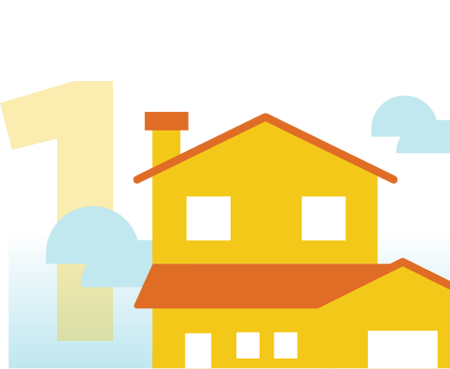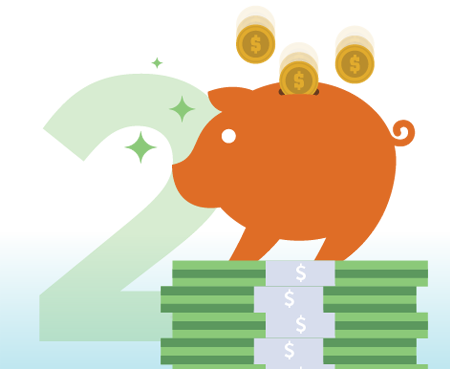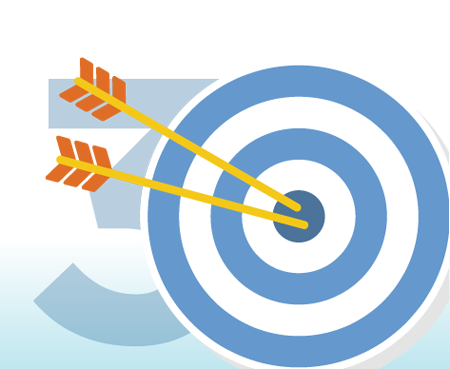
Proper Planning and Your Retirement Bucket
Your retirement bucket is a symbol of the retirement process. The outside is decorated with your retirement goals. The inside holds the money you need to achieve those goals. Your bucket also has a handle, which symbolizes your responsibility to take charge of your retirement.
There may be things you haven't thought about while saving and investing.
- Is your beneficiary designation up to date?
- Is your will, estate plan or trust up to date?
- Do you have multiple previous retirement plans? Is it time to consolidate?
- Do you understand when and how to get Social Security and Medicare?
- Do you know your plan's distribution options?
Grab the handle and make sure all your hard work and planning pays off when it's time to retire.
Create Your Retirement Paycheck
Even though you will stop working, you'll still need to get paid. Expenses don't stop when you stop working. Your retirement paycheck can include multiple sources of income.


Need Some Help?
You only have one shot, one opportunity, to seize everything you want in retirement. Why do it alone when you can have the help of professionals? NestEgg U has assisted thousands of people in preparing the best way possible. We're here to help you too.
Planner Tips From the Dean
Congrats! You've made it to the Planner section. When I started NestEgg U in the 1990s, I had two favorite sayings: "Retirement is a process, not a date on the calendar" and "I sure like classic rock."
I should have told you this at the beginning, but you don't really graduate from NestEgg U. It's kind of like that old song: "You can check out any time you like, but you can never leave."
Planners are people who set their goals, manage their spending, increase their savings and invest appropriately. A Planner can be 25 or 65. They understand the process, and they understand it doesn't end here.


You've Built a Retirement Plan Balance, Now What?
We all have unanswered retirement questions. Advise U provides goals-based financial planning and investment management that allows participants to design and implement a custom answer for their unique situation. This one-on-one solution gives participants the opportunity to work with a NestEgg U financial planner they already know and trust.
Learn MoreSmart Options for Your Old 401(k)
Wondering what to do with that 401(k) from your old job? Or your current 401(k) here at NestEgg U? Roll With U is our way of helping you decide. You'll discover options such as 401(k) rollovers, IRA rollovers and retirement planning by investment pros. In true NestEgg U fashion, we make the choices easy to understand so you can make the right one.
Learn More
Roth 401(k) Contributions
A Roth 401(k) contribution is designated as after-tax rather than a pre-tax deferral. Any participant who is eligible for the plan may make a Roth 401(k) contribution. Participants may choose to make Roth 401(k) contributions, pre-tax deferrals, or any combination of the two.
Common Questions
- Roth 401(k) contributions are subject to the same dollar limitations as pre-tax deferrals. Check the “Saver” section for more information on the annual contribution limits.
- Participants may not “double-dip” with both types of contributions. The dollar limitation applies to sum of both pre-tax and Roth contributions (but does not include employer contributions).
- A participant in a low marginal tax rate who anticipates being in a higher tax bracket at the time of distribution.
- Any participant who can afford to contribute the full amount and pay taxes now.
- Any participant looking to diversify their savings by having both pre-tax and after-tax contributions.
- A participant looking for estate planning options.
- Your Roth 401(k) contributions must be made through payroll deductions.
- Roth 401(k) contributions are irrevocable and may not be changed to pre-tax contributions.
- A Roth 401(k) contribution plus earnings is distributed without income tax consequences if the distribution is a "qualified distribution".
- To be a "qualified distribution", the participant must:
- Have a qualifying event (age 59½, death, or disability), and
- 5-year participation in Roth 401(k).
- The 5-year period begins with the first Roth 401(k) contribution
- You don't have to contribute in each of the 5 years.
- A Roth 401(k) is subject to the Required Minimum Distribution rules. However, Roth IRAs are not subject to the Required Minimum Distribution rules.
- Participants may rollover their Roth 401(k) contributions to another plan that has the Roth 401(k) provision or to a Roth IRA.
- Roth IRAs may not be rolled into a Roth 401(k).










